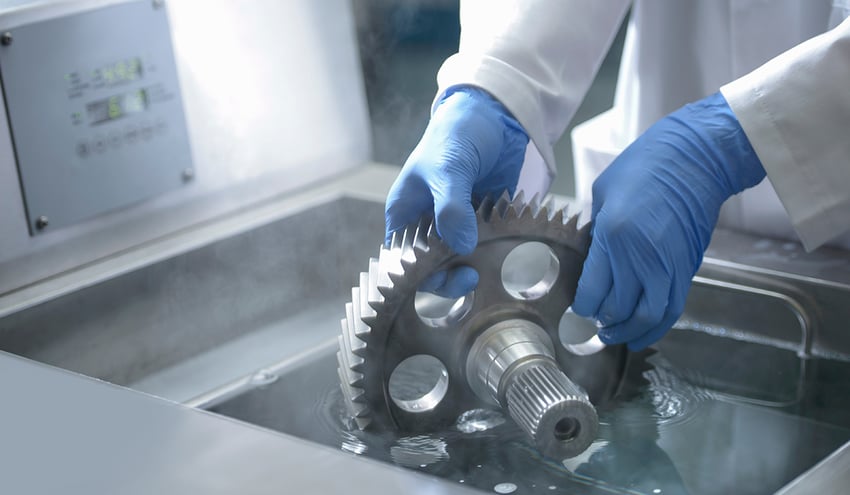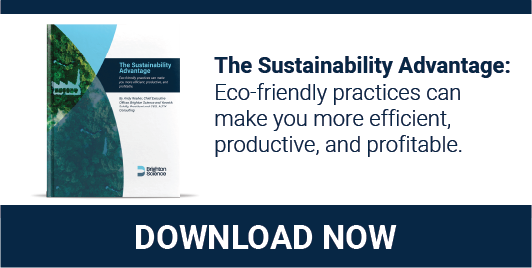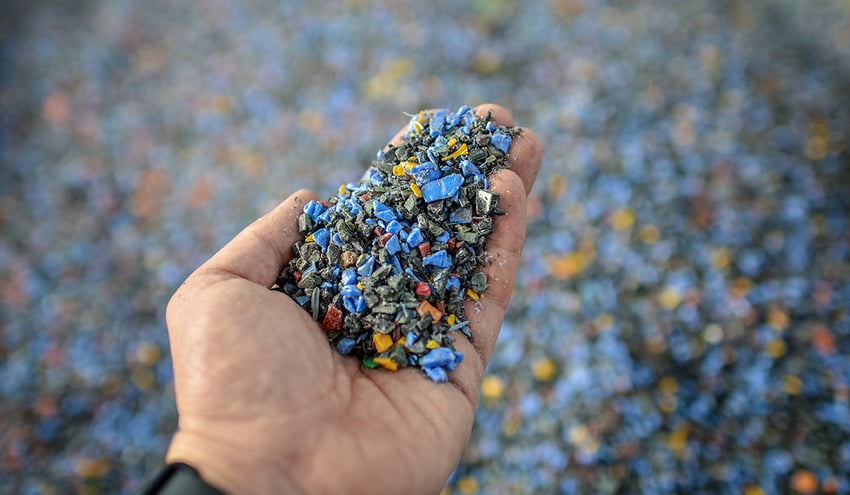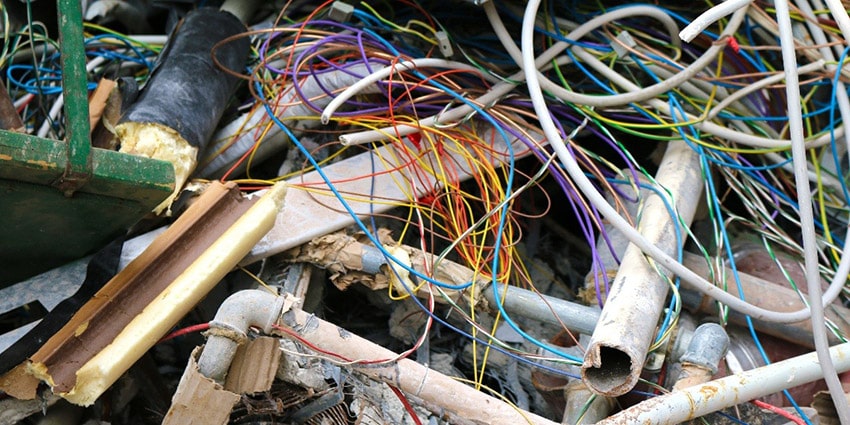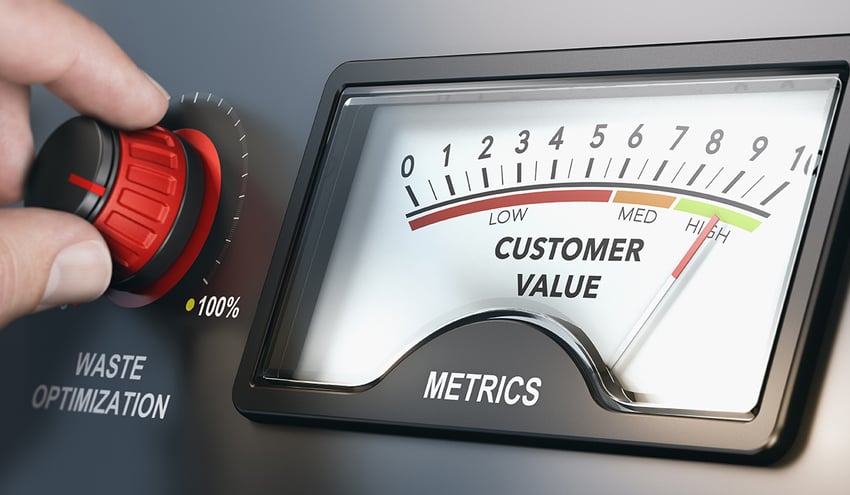Manufacturers who use solvent-based industrial parts cleaning processes must find alternative methods. Solvent-based cleaning processes use chemicals that emit or release Volatile Organic Compounds (VOCs).
These are coming under increased scrutiny due to their harmful effects on health and the environment. Traditional solvents like trichloroethylene are approaching the day when they will no longer be permitted. A similar situation is faced by the PFAS chemicals used extensively in vapor degreasing processes.
Alternative methods of cleaning include:
- Aqueous cleaning systems (water-based)
- Ultrasonic cleaning (essentially, a mechanical process using agitation)
- Vapor degreasing, replacing PFAS chemicals with solvents like n-propyl bromide (which still pose challenges)
Each method has advantages and disadvantages, and selection involves considering factors like material compatibility, waste disposal, and the ability to achieve effective cleaning.
Reducing Risk When Moving to Aqueous Cleaning Solutions
If the new cleaning method doesn’t clean parts as well as the current process, problems, and customer complaints are likely. Reducing this risk requires an analytical approach to experimentation and measurement.
The problem is that what constitutes “clean” in parts washing is seldom well understood and rarely measured. (Particulate counting of contamination used in some industries is indirect and does not relate to chemical cleanliness.)
Establishing a baseline for cleanliness will reduce the time needed to develop and implement a new cleaning process.
What’s Driving the Change in Cleaning Agents?
Many of the chemicals used in solvent cleaning systems, and for that matter, vapor degreasing, are now known to carry health and environmental risks. However, there is as yet no single regulation forcing manufacturers to abandon them. Instead, four main drivers are at work:
Environmental concerns: Regulations around hazardous waste disposal and air/water pollution are becoming stricter, and fees are rising. As a result, companies are looking for ways to minimize the environmental impact of their part washer cleaning practices.
Workplace safety: Harsh chemicals pose health risks to people working in close proximity. Regulations and increased awareness of the problem are prompting industries to seek safer alternatives.
Consumer and public pressure: Demand for manufacturers to adopt more sustainable practices is growing. When they have the information, consumers increasingly opt for products cleaned by environmentally friendly methods (which may be used as a selling point).
Cost reduction: More environmentally-friendly cleaning processes can offer savings on cleaning agent purchases and waste disposal fees.
In response to these challenges, manufacturers using solvent-based cleaning systems are looking for alternatives.
Understand the Risk
Manufacturers clean to facilitate strong adhesive bonds with a coating, adhesive, or paint. In many cases, manufacturers who use cleaning processes don’t perform the final coating, sealing, bonding, or painting process—their customers will complete some form of adhesion later in the product’s life cycle. However, everyone involved must understand how clean a part needs to be for the final product to perform properly.
Adhesion takes place in the first few molecular layers of a surface. Unseen contamination on a material surface will reduce the substrate's ability to form bonds with coatings.
Changing cleaning processes is fraught with risk. If the new cleaning agent is less effective, paints, varnishes, and adhesives won’t form bonds of the strength they had previously. That can lead to peeling and bond failures, which can result in complaints, warranty claims, and reputational damage.
The risk arises because:
- Definitions of cleanliness are incomplete or insufficient
- There are no objective cleanliness metrics in production
- There’s a gap in understanding regarding surface quality
Risk reduction means addressing these three elements. This is done by implementing technology that monitors surface cleanliness and issues alerts when quality moves outside acceptable limits. An additional benefit is that objective measurement of both the old and the new or proposed cleaning process helps compress the project timescale.
What’s the Difference Between Solvent Cleaning and Aqueous Cleaning?
These are the two most widely used surface cleaning processes. Recently, there's been a growing emphasis on using aqueous cleaners whenever possible. Advancements in cleaning technology have made aqueous parts washer cleaning more effective, and stricter regulations are making solvent use less attractive. However, solvent cleaning remains the go-to method for certain applications where its superior cleaning power is crucial.
The main characteristics/attributes of solvent cleaning are:
- It uses organic liquids like acetone, alcohol, or mineral spirits as the solvent
- Dissolves tough soils like grease, oil, adhesives, and tar, allowing them to be rinsed away
- Often preferred for its efficiency as solvents act and dry quickly
- Many solvents are hazardous and have strong fumes, requiring special handling and ventilation, as improper use can pose health risks and contribute to air pollution
- Strict regulations around solvent disposal due to their environmental impact.
In contrast, points to note regarding aqueous cleaning are:
- Uses water as the primary solvent, often with added detergents or soaps to enhance cleaning power
- Water-based solutions are less hazardous and often biodegradable, making them safer for people and the environment
- It may not be effective for all types of soils, particularly lubricants made of oil, grease, or adhesives
- Some soils require additional agitation or heat to remove stubborn residues
Baselining the Existing Cleaning Method
It’s impossible to establish a target level of cleanliness for a new aqueous cleaning agent unless you know what the existing or previous system achieved. Assuming the current level of cleanliness is sufficient to prevent subsequent surface adhesion problems, the first step is to measure surface conditions before and after the current process as part of a trending study. (Measure before to know what improvement the process brought about.)
Cleanliness should be quantified using water contact angle measurement. (This method has higher resolution and repeatability than alternative methods.) Starting when the cleaning chemistry is fresh, measure part surface condition daily until the first scheduled washer maintenance cycle. This will reveal the best and worst-case values.
Continue performing other quality/cleaning process checks, such a pH, titration and particulate counts as before.
Qualifying Performance of the New Cleaning Process
The baselining study provides the reference data set. This defines the upper and lower limits of cleanliness required and enables the evaluation of cleaning trials on equipment from various potential vendors.
To evaluate potential solutions, follow the same baselining method as described previously. Use the data obtained to compare performance, combining this with other factors such as capital cost, operating expenses, environmental impact, and space needed. This will reveal the optimal solution for the business.
Rethink your adhesion manufacturing processes with Surface Intelligence.
The Importance of Long-Term Monitoring
Cleaning performance can vary over time. Chemistry can change, equipment will wear, and the condition of the input material may improve or deteriorate. Accordingly, manufacturers should take steps to monitor the effectiveness of the cleaning process over time. There are two requirements:
- A measurement technology that is objective, accurate, repeatable, and of sufficient resolution.
- Real-time storage and analysis of the measurement results.
Together, these will provide data on the quality of the cleaning performed and alert key personnel if results exceed acceptable limits.
Brighton Science has a solution that can automate this for manufacturers. BConnect combines in-line contact angle measurements with online data storage and analysis. Trend charts show the current level of surface cleanliness being achieved, with a dashboard function summarizing performance for a management overview.
Reduce Change Risk With Measurement Technology
The world in which manufacturers clean surfaces before coating and bonding is changing. Multiple drivers are pushing them to implement new cleaning processes. As cleaning performance is seldom well-measured and understood, this significantly risks product quality.
The way to manage and drive down this risk is by implementing best-in-class surface condition measurement technology. BConnect is a rapidly deployable solution that is helping to make manufacturers make this change today.
To learn more about eco-friendly practices to help your organization become more productive and profitable, download the eBook "The Sustainability Advantage."

